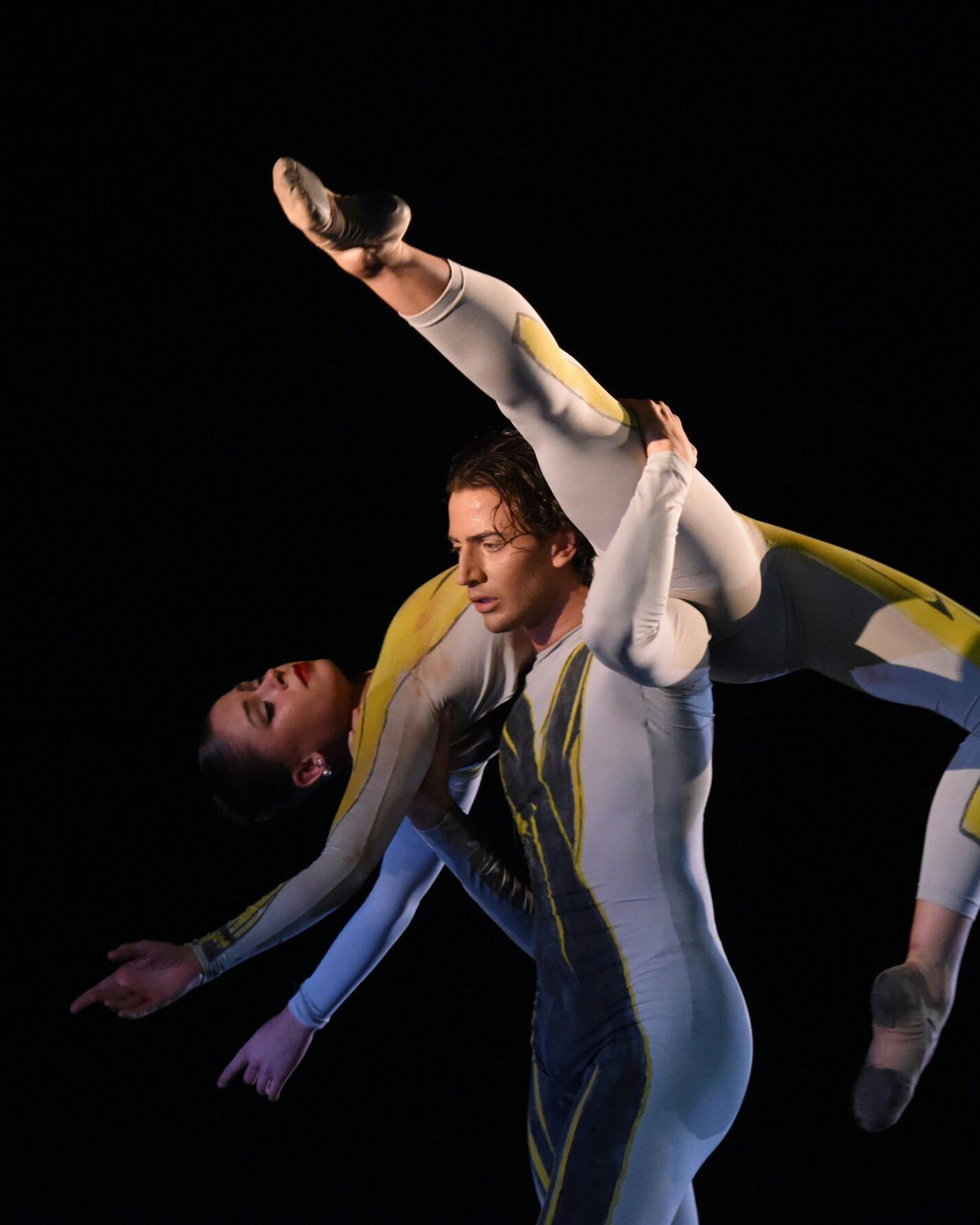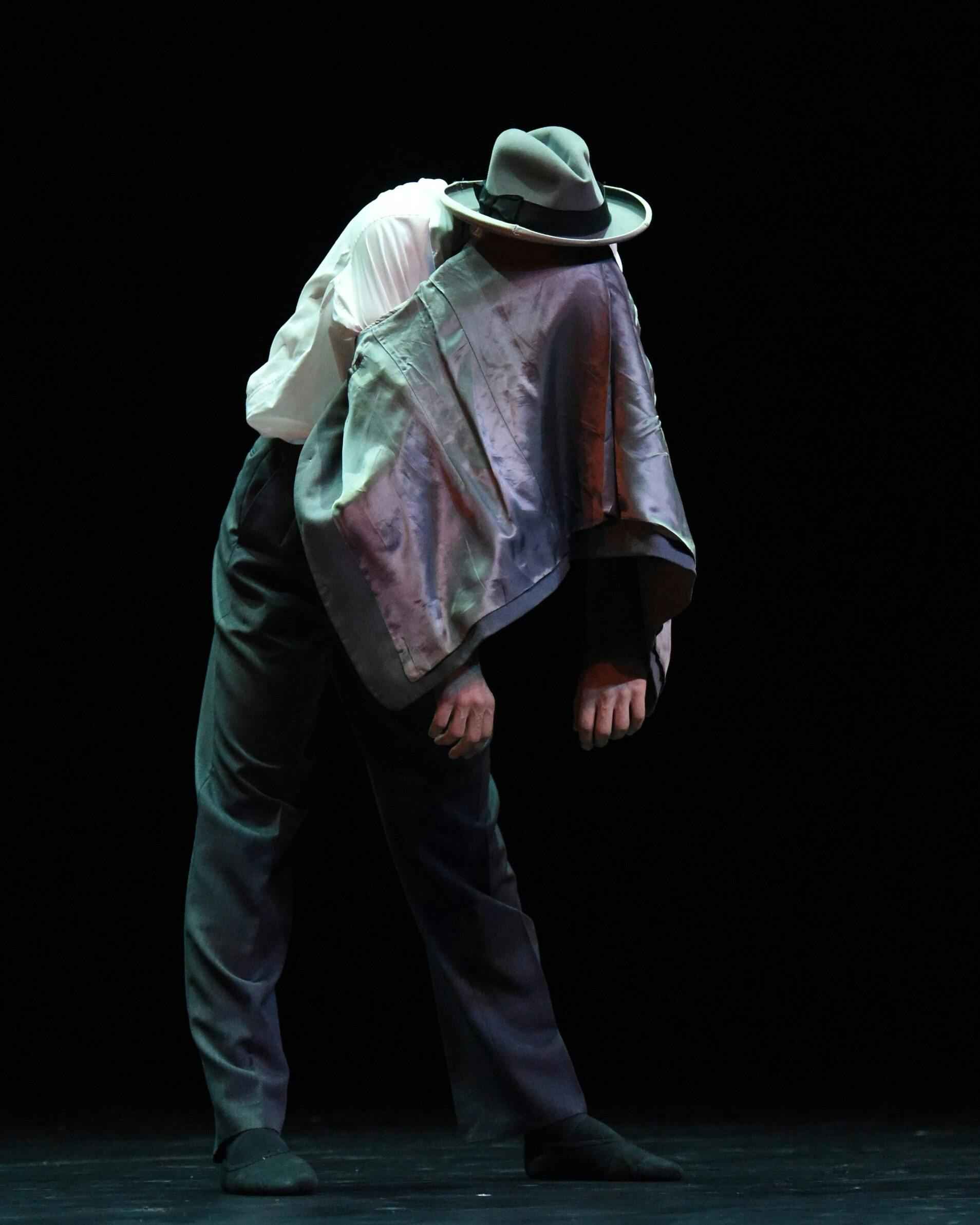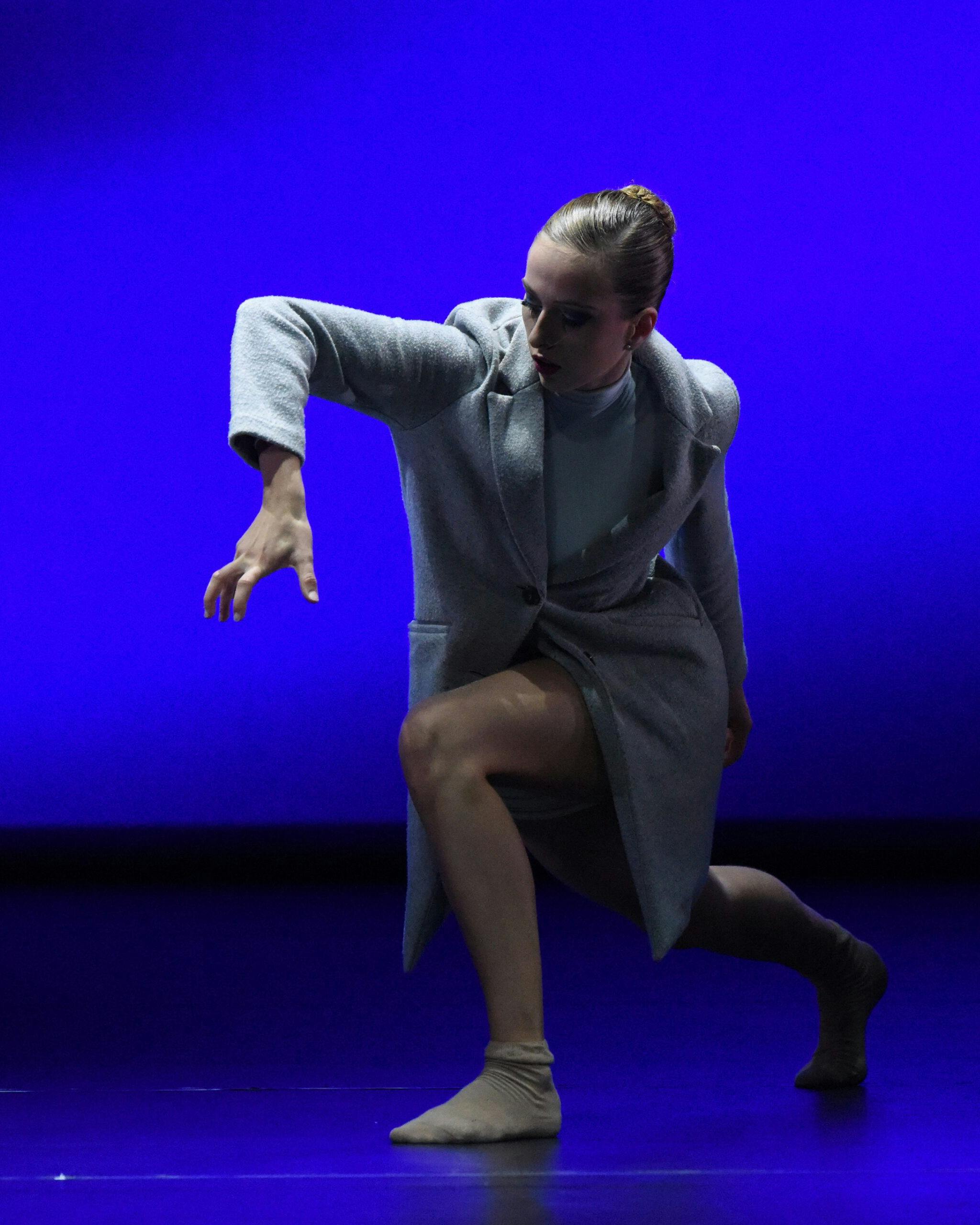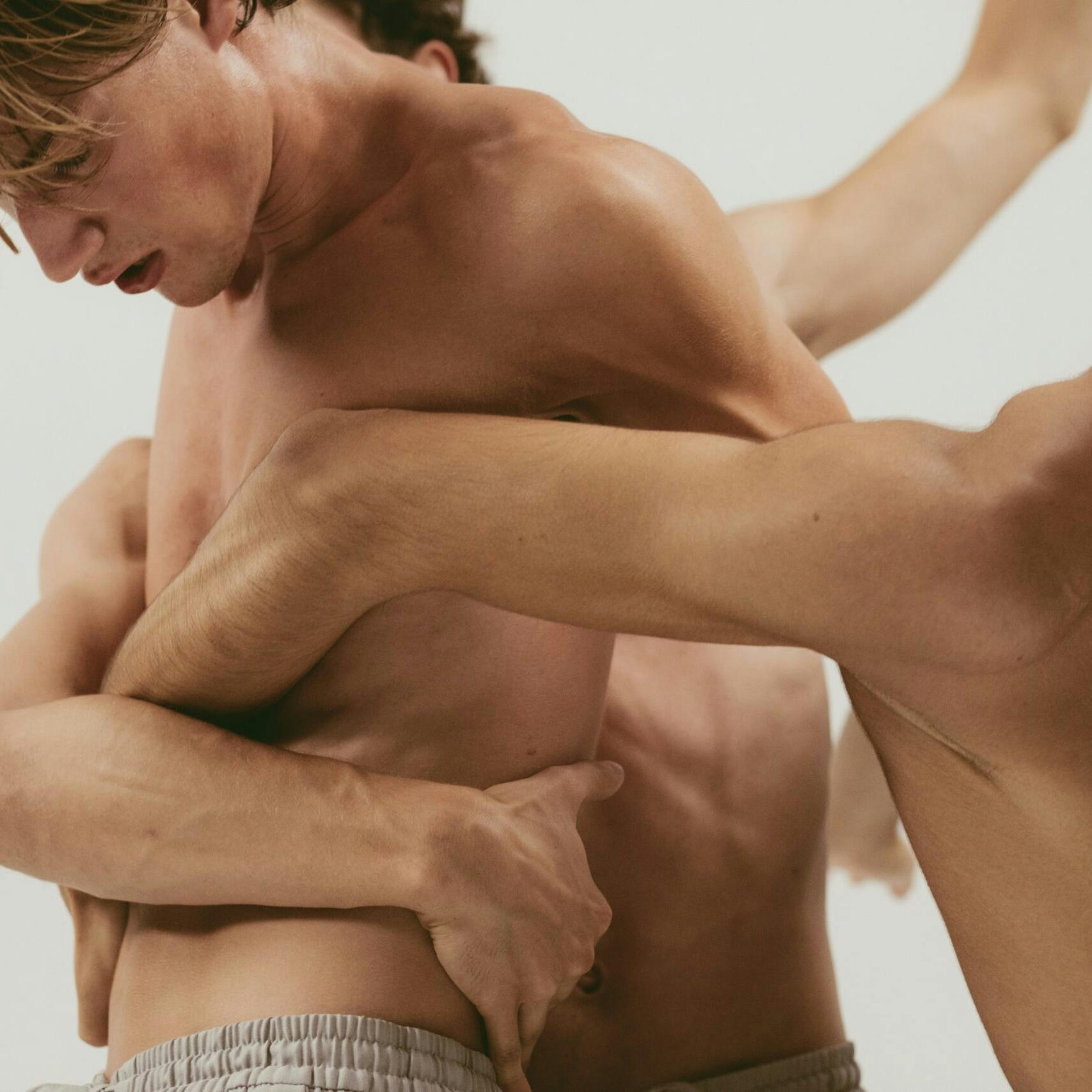Interview
When beginnings flow: the remarkable TANZLAND cooperation.
by Deike Wilhelm
The Bavarian Junior Ballet Munich (BJBM) and the City of Villingen-Schwenningen have been building a close partnership over the last three seasons. The company visited the city on four occasions between Spring 2018 and Autumn 2020, performing four different programmes. In addition, there have been many workshops and participatory projects. The collaboration is one of thirteen projects in Germany funded through the TANZLAND programme, which aims to bring contemporary dance to regional audiences who do not have easy access to big cities or cultural centres. The TANZLAND fund for touring partnerships was initiated by the German Federal Cultural Foundation and is managed by the Umbrella Association for Dance in Germany, the Dachverband Tanz Deutschland e.V.. It funds collaboration between dance companies and theatres or venues that do not have their own dance ensembles (“INTHEGA venues” in German).

A conversation between:
Andreas Dobmeier (AD), Director of the City of Villingen-Schwenningen’s office for cultural affairs
Ivan Liška (IL), Artistic Director of the BJBM
Deike Wilhelm (DW), Author and Stage Manager of the BJBM
DW: Andreas Dobmeier, why did you choose the BJBM? Why exactly were you interested in collaborating with them? Committing yourself to one company for three years is also a risk, and limits your programming choices.
AD: For several years now, I have been inspired by the BJBM and especially by the sense of joy and youthfulness that comes across in their dancing. They have a freshness and energy, while being totally professional. I had first seen the company perform at a matinée of the Heinz-Bosl-Stiftung in the Nationaltheater in Munich, which had led me to invite them to Villingen-Schwenningen even before our collaboration began. I was particularly impressed with the diversity of the repertoire, which ranges from classical and neoclassical ballet to contemporary works by internationally renowned choreographers.
DW: Tell us about the early days of the cooperation. How did it begin? And how did you realise your plans?
AD: The call for applications for the TANZLAND fund was only published in Spring 2017, when the programme for our next season had already been confirmed and was due to go to print. Nevertheless, I wasn’t prepared to let an opportunity like that pass us by. It was a unique chance to create a stronger presence for contemporary dance in our programming. I called Ivan Liška and we both agreed that a collaboration would be fruitful for both sides, enabling us to develop new approaches to touring, creative learning and engagement. We jointly wrote the texts for the funding application and set out a budget. The following weekend, I made a trip to Hof to see a performance by the BJBM and get Ivan Liška to sign our application before sending it to Berlin just before the deadline expired. We had a long and very inspiring conversation in which we talked about our collaboration and developed many more ideas. I left feeling very confident, as it has been my experience that when beginnings flow, all will be well.
DW: Ivan Liška, was it a good beginning?
IL: Yes, absolutely. Andreas Dobmeier came all the way to Hof, where the company was performing. After the performance, we discussed everything that still needed to be confirmed for the application and it was sent off the following day, just before the deadline. It all happened very quickly. It was close to midnight when we made the final decision to go ahead. The actual start to our collaboration was also very special: We gave the last performance of the season at the Theater am Ring in Villingen-Schwenningen. During the summer break, all the seats were replaced in the auditorium. Then, after the break, we opened the season and were the first to perform in the theatre with all its new seats. It was a great moment for the theatre and a real honour for us.
DW: Andreas Dobmeier, what were your hopes for this partnership?
AD: Our most ambitious aim was to set something in motion in our town. To achieve a shift that would be visible from the outside, through a diverse programme of dance, but also – and more importantly – one that would affect people personally, emotionally, be they spectators or participants. For a long time now, I have wanted to make contemporary dance an integral part of our cultural life. By programming performances by renowned dance companies and initiating two large-scale participatory dance projects for young people, modelled on “Rhythm Is It!”, we had repeatedly managed to generate real enthusiasm for dance here. I knew that the audience in Villingen-Schwenningen had an interest in dance.
DW: What makes dance special? Why did you choose this cooperation, which must have significantly increased the proportion of dance in your programming? How much is dance valued in our society?
AD: Life is motion, and dance is the highest expression of our vitality. The elegance and eloquence of the human body are most visible when we dance. Our soul is revealed. External and internal movement – motion and emotion – unite. Joy, for example, is expressed through the body, via body language. Professional dance intensifies this experience. The energy of dance is transmitted to the audience, allowing it to live stories and explore new worlds. That is why it was so important for me to make dance an important part of our programming.
DW: Did the project live up to your expectations? What were your personal highlights in the course of this partnership?
AD: The TANZLAND project more than exceeded my expectations. The very first performance by the BJBM, which was entitled “Tanz für Herz und Atem” (Dance for Heart and Breath) and presented classical and very enjoyable contemporary choreographies, delighted our audiences and fascinated many of the younger spectators.
A varied programme, entitled “Münchner Freiheit”, opened the 2018/19 season. The young dancers gave it their all and received well-deserved standing ovations.
The performance of «Das Triadische Ballett» (The Triadic Ballet) by Oscar Schlemmer was scheduled to coincide with the 100 Years of Bauhaus celebrations. We invited pupils to attend an open dress rehearsal, which meant that the production had an extraordinary impact on several art and dance projects in schools. The schoolchildren interpreted Schlemmer’s interdisciplinary approach in wonderful ways, combining sculpture, painting and dance.
The absolute highlight was Ivan Liška’s “Grand Finale”, the BJBM’s final performance as Villingen-Schwenningen’s dancers in residence. It was an electrifying evening of contemporary dance, including previews of two world premieres: «Eyeblink» by Maria Barrios and «When she knew» by Caroline Finn, both of whom had travelled far to attend the evening. The audience was even invited to join in the dance, with Ivan Liška and Caroline Finn teaching them a movement sequence during the performance.
DW: Ivan Liška, do you feel that the company has had a second home here during these two years?
IL: Yes, definitely. Even though the company’s cast changed during this period, the dancers developed a real relationship with the city and the audience. It didn’t feel like they were dancing in front of a new audience every time. They felt at home in Villingen-Schwenningen. From a personal perspective, it was very rewarding. The theatre also made a big effort to assist us during these three seasons. Their team is small, but very dedicated. They looked out for what we needed, and whenever something was missing for one performance, it would suddenly be there for the next one: a better sprung floor, new tabs and even ballet barres all magically appeared. The theatre made it their business to accommodate us in a professional and open-minded manner.

DW: Andreas Dobmeier, apart from the performances, there were many more projects and workshops. I noticed that most of the workshops were about transcending boundaries in some way, or about integration. A workshop just for boys, workshops for primary schools and secondary schools, for teachers and clubs, and a workshop for people with disabilities. Dance seemed to spread through the city, uniting everything and everyone. What were your wishes, goals and priorities in planning these workshops?
AD: The learning and engagement part of the project was hugely important to me from the very beginning, and I was delighted to be able to invite Prof. Padmini Braun from the Trossingen University of Music to work with Ivan Liška. Together they developed a programme of creative learning through dance and movement for Villingen-Schwenningen. Padmini Braun had already realised the two school projects that I mentioned earlier, so it was relatively easy to convince various schools, dance schools, the music academy, the symphony orchestra and other cultural organisations to participate. As a result, we developed so many workshops and projects that I cannot even list them all here. The greatest thing, of course, was that they were able to work with consummate professionals who easily managed to captivate and inspire the young people.
DW: What kinds of workshops were there and what was special about them?
AD: I will only mention a few examples: Taking Aszure Barton’s piece «Nonett» as a starting point, the choreographer Terence Kohler worked with a group of young people to show them how a piece of choreography is made. He asked them to improvise to Richard Reed Parry’s “Music for Heart and Breath” with their eyes closed. A young girl said afterwards: “I never imagined that I would have enough ideas to dance for so long on my own.”
Anna Beke, a dance teacher at the Bavarian State Opera in Munich, led a workshop on Norbert Graf’s choreography «Blues in A-Minor», which was inspired by the work of Paul Klee, particularly his finger puppets. Participants of all ages explored what happens when two finger puppets meet, grow a body and legs, yet remain hidden behind a mask.
In a training course for teachers, Ivan Liška used an excerpt from his piece «Bilder einer Ausstellung» (Pictures at an Exhibition) to demonstrate how dance relates to painting. He referred to Piet Mondrian, who said about his own works that they were not intended to appear static, but moving.
Daniel Robertson-Styles, one of the dancers in the ensemble, taught movement sequences from Xin Peng Wang’s piece «Im Wald» (In the Forest) to boys from a secondary school. Learning these movements, the young men were amazed how powerful, fast and difficult the dance was. Meeting a young male professional dancer impressed even those who had previously regarded dancing as something only girls do.
DW: Ivan Liška, how did you and Daniel manage to get these boys to dance?
IL: We led by example. Daniel was almost the same age as them, so just the fact that there was no age difference was already an incentive. And Daniel is cool, of course! Men shame each other more than women, and their courage is often met with disparagement. For boys it is even more vital than for girls to help them to believe in themselves. Some of them were strongly influenced by breakdance, so that they were able to move very well, but only in one style that had to look very cool. Dance can do more. It can express vulnerability – something that we all carry within us.
DW: Is there a particular workshop that you like to remember?
IL: There was a workshop with an inclusive class and students with learning difficulties. I was very moved by that. Some of the children were hesitant at first, but when they did participate, they displayed so much enthusiasm. There was overwhelming joy and happiness, but then they stopped abruptly because they did not feel included anymore. Towards the end, there was another very moving moment when the boys realised that they were being taken very seriously as partners. They had achieved something that they had never done before. We high-fived when we said goodbye – we had become friends.
DW: Andreas Dobmeier, I remember your words at the very beginning of our collaboration. You said to the dancers, “Your task is to set Villingen-Schwenningen in motion.” A great challenge for young people. My question is therefore: Has Villingen-Schwenningen been set in motion?
AD: Without a doubt, yes! A great example was “Schwenningen’s Long Night of Culture”, a celebration that takes place every year in Schwenningen’s city centre and attracts 15,000 – 20,000 visitors. Not only did the BJBM perform two totally different dance pieces on the main stage, but Ivan Liška also inspired the audience to get moving with a small choreographed routine. In both respects it was a new experience for many people.
IL: Yes, it was a great experience for us, too. We showed works from our repertoire and then I invited the audience to participate. Together with one of the dancers, Nikita Voronin, I demonstrated steps from Richard Siegal’s piece «3 Preludes». At the end, Andreas Dobmeier’s wish came true – Villingen-Schwenningen danced! Around 300 people in the first 10 rows didn’t just sway, they really moved. People of all ages were dancing the steps that we had taught them. This is how we came a little closer to achieving our goal – not just in the theatre, but in the town square.
DW: How is it different when spectators join in, instead of just watching?
IL: They experience a sense of identification, by discovering themselves in the movement. I believe that this is one of the reasons why the TANZLAND programme was implemented. Not just in order to bring dance to the regions, but also to create an awareness of dance in the general population. The goal is for them to continue dancing, long after these collaborations end.
DW: Andreas Dobmeier, has Villingen-Schwenningen continued to move? How sustainable has this project been in your opinion?
AD: One the one hand, we were able to introduce people to dance and ignite an interest in the art form. On the other hand, young people in particular had the opportunity to experience new things in the workshops, expanding their world and scope for self-expression. Through exploring dance and music, they have been able to experience their bodies in completely different ways and glimpse new forms of self-awareness. For me, one of the most important experiences is to feel “completely human” for once. This can be achieved through play, and I really wish that dance and performing arts could be permanently included in the school curriculum. Imagine the impact if the qualities learned through play – perceptiveness, listening, respect, developing one’s own creativity – could be channelled back into society.
DW: The Bavarian Junior Ballet Munich visited Villingen-Schwenningen for three consecutive seasons. As Ivan Liška has already mentioned, the city became a second home for the company. How did the audience respond to the BJBM, and to seeing the same company over and over again?
AD: The audience was quick to embrace the company. Although half of the young dancers move on every year and there are new faces to welcome all the time, the ‘dancers in residence’ were perceived as an ensemble that belonged to the city. Partly, this was achieved through elements of surprise. To give an example: two of the dancers– Nikita Voronin and Armando Arens – performed at a concert by our symphony orchestra. They danced a piece choreographed by their colleague Florimon Poisson to «Les Élements» by the French baroque composer Jean Féry-Rebel.
IL: Yes, that was a beautiful experience. We were able to recommend a young choreographer from the ensemble: Florimon Poisson. It was a great opportunity for him, and the piece turned out very well. It continues to be performed – he is now rehearsing with some of the new ensemble members, so that we can show it again soon.
DW: Andreas Dobmeier, have you been able to reach a new audience for dance?
AD: Absolutely. As part of our dance series “VSeMotion”, we programme five performances by top dance companies from all over the world each season. The series is now very well booked and has many subscribers. A new, younger audience has also discovered its love of dance and is particularly inspired by the great diversity of contemporary dance.

DW: One last big question for you, Andreas Dobmeier: As director of the office for cultural affairs in Villingen-Schwenningen, why do you think culture is important for our society? How do you value culture?
AD: Taken together, culture, art and education are essential for our society to be able to exist in the future. We experience the diversity of the world through our senses and our intellect. These experiences in turn stimulate innovation, creativity and experimentation. Forces are mobilised that can initiate social change. It is absolutely necessary for cultural policy to take the initiative, be publicly funded, independent of economic or other interests. Only then can it provide a wide range of cultural and educational offerings that are innovative, creative and impactful. The rapid development of the coronavirus crisis in recent weeks has forced us to re-think many things. We must work hard to preserve and expand our intellectual freedom in the new world that is now emerging.
DW: Ivan Liška, why is dance important for our society?
IL: Because it inspires people to ask themselves questions… Mysteries are important for all of us. A work of art does not have to be direct; it should convey something that makes you think. Not like philosophy, but similar. Something that you cannot experience in your everyday life – not even in church. I believe that each and every body counts in dance, and that people are affected even if they can’t quite interpret what they are seeing. Besides, everyone has a body and moves from time to time. Even with older audiences, we notice that they can feel this part of themselves waking up. Dance is the oldest form of artistic expression. I believe that it is instinctive. Believing in dance is not anachronistic. If you listen to your innermost self, you will find it. That’s our job.
DW: How would you sum up the three-year touring partnership?
IL: I am grateful to Andreas Dobmeier for persevering, even when our offerings were perhaps somewhat challenging. Some venues are only interested in the ‘greatest hits’. For me it was important to perform a variety of different works during these three seasons, gently educating the audience. I believe that the project was a success.
DW: One final question, Andreas Dobmeier: Will the BJBM continue to visit in future, even after the present programme ends?
AD: Yes, I have already invited the BJBM to return next season – at the request of our audience! I hope that these unprecedented times of coronavirus-related threats will soon be behind us and that we can re-open our theatre in September at the latest.
DW: Many thanks for this engaging conversation. I wish you every success in all your future cultural endeavours.
Translated by Lisa Marie Bowler























